How to deploy a containerized Django app with AWS Copilot

Generally there are 2 major options at AWS when it comes to deployment of containerized applications. You can either go for EKS or ECS.
EKS (Elastic Kubernetes Service) is the managed Kubernetes service by AWS. ECS (Elastic Container Service), on the other hand, is AWS’s own way to manage your containerized application. You can learn more about EKS and ECS on the AWS website.
For this post we will use ECS.
The chosen one and the sidekick
With ECS chosen, now you have to find a preferably easy way to deploy your containerized application on it.
There are quite a number of resources from AWS that are needed for your application to live on ECS, such as VPC (Virtual Private Cloud), Security Group (firewall), EC2 (virtual machine), Load Balancer, and others. Creating these resources manually is cumbersome so AWS has came out with a tool that can automate the creation of all of them. The tool is known as AWS Copilot and we are going to learn how to use it.
Install Docker
Docker or Docker Desktop is required for building the Docker image later. Please refer to my previous article on how to install Docker Desktop on macOS, or follow Docker’s instructions for Linux and Windows.
Set up AWS CLI
We need to set up the Docker AWS CLI (command-line interface) for authentication and authorization to AWS.
Execute the following command to install the AWS CLI on macOS:
$ curl -O "https://awscli.amazonaws.com/AWSCLIV2.pkg"
$ sudo installer -pkg AWSCLIV2.pkg -target /
For other OSes see Amazon’s docs.
Execute the following command and enter the AWS Account and Access Keys.
$ aws configure
Install AWS Copilot CLI
Now it’s time for the main character: AWS Copilot.
Install AWS Copilot with Homebrew for macOS:
$ brew install aws/tap/copilot-cli
See AWS Copilot Installation for other platforms.
The Django project
Create a Django project by using a Python Docker Image. You can clone my Git project to get the Dockerfile, docker-compose.yaml and requirements.txt that I’m using.
$ git clone https://github.com/aburayyanjeffry/django-copilot.git
Go to the django-pilot directory and execute docker-compose to create a Django project named “mydjango”.
$ cd django-copilot
$ docker-compose run web django-admin startproject mydjango .
Edit mydjango/settings.py to allow all hostnames for its URL. This is required because by default AWS will generate a random URL for the application. Find the following variable and set the value as follows:
ALLOWED_HOSTS = ['*']
The Deployment with AWS Copilot
Create an AWS Copilot “Application”. This is a grouping of services such as web app or database, environments (development, QA, production), and CI/CD pipelines. Execute the following command to create an Application with the name of “mydjango”.
$ copilot init -a mydjango
Select the Workload type. Since this Django is an internet-facing app we will choose the “Load Balanced Web Service”.
Which workload type best represents your architecture? [Use arrows to move, type to filter, ? for more help]
Request-Driven Web Service (App Runner)
> Load Balanced Web Service (Internet to ECS on Fargate)
Backend Service (ECS on Fargate)
Worker Service (Events to SQS to ECS on Fargate)
Scheduled Job (Scheduled event to State Machine to Fargate)
Give the Workload a name. We are going to name it “mydjango-web”.
Workload type: Load Balanced Web Service
What do you want to name this service? [? for help] mydjango-web
Select the Dockerfile in the current directory.
Which Dockerfile would you like to use for mydjango-web? [Use arrows to move, type to filter, ? for more help]
> ./Dockerfile
Enter custom path for your Dockerfile
Use an existing image instead
Accept to create a test environment.
All right, you're all set for local development.
Would you like to deploy a test environment? [? for help] (y/N) y
Wait and see. At the end of the deployment you will get the URL of your application. Open it in a browser.
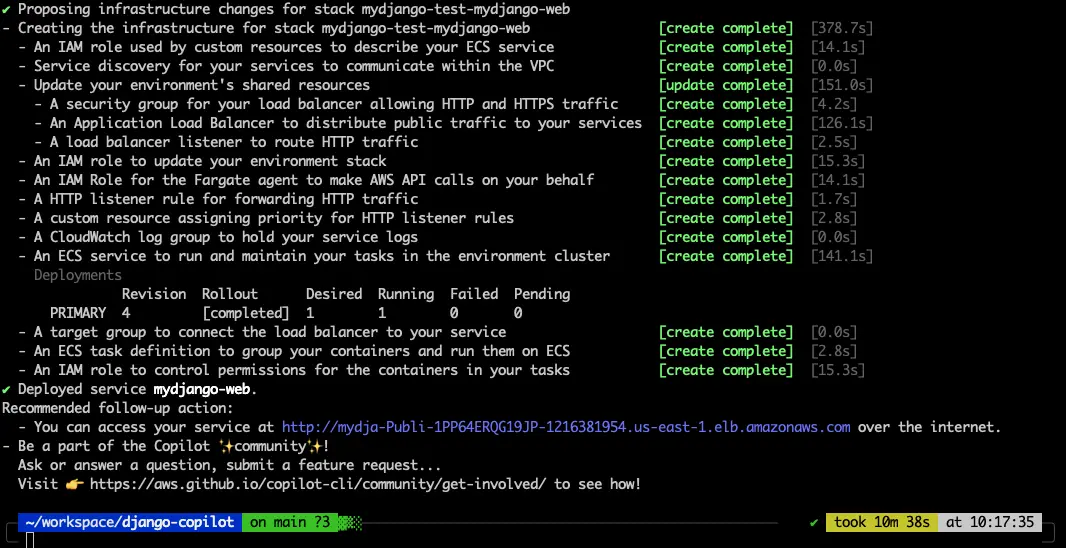
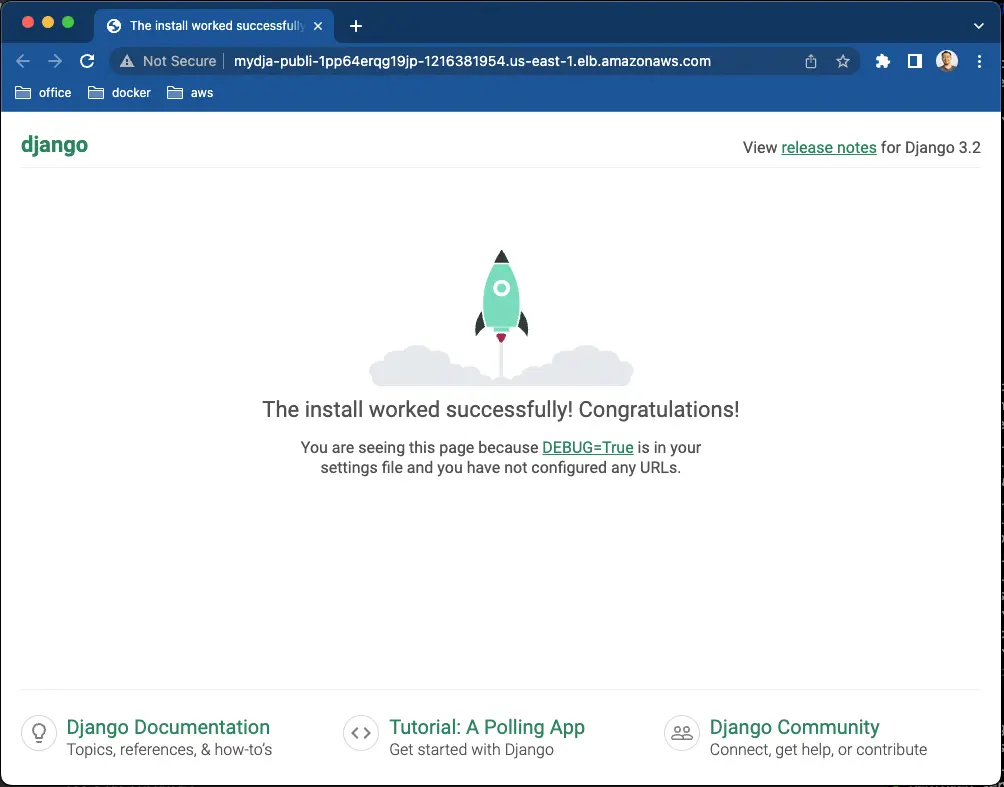
Now let’s migrate some data, create a superuser, and try to log in. The Django app comes with a SQLite database. Execute the following command to get a terminal for the Django app:
$ copilot svc exec
Once in the terminal, execute the following to migrate the initial data and to create the superuser:
$ python manage.py migrate
$ python manage.py createsuperuser
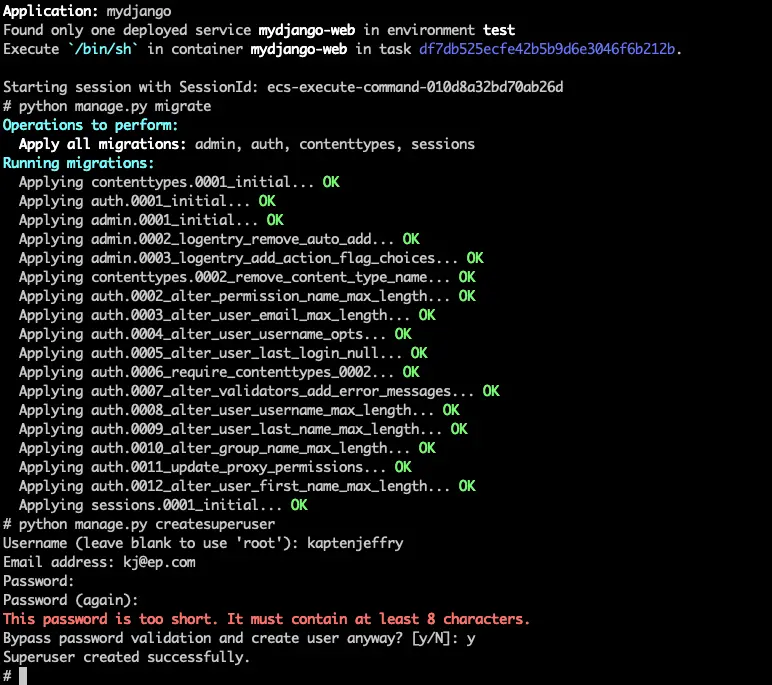
Now you may access the admin page and login by using the created credentials.
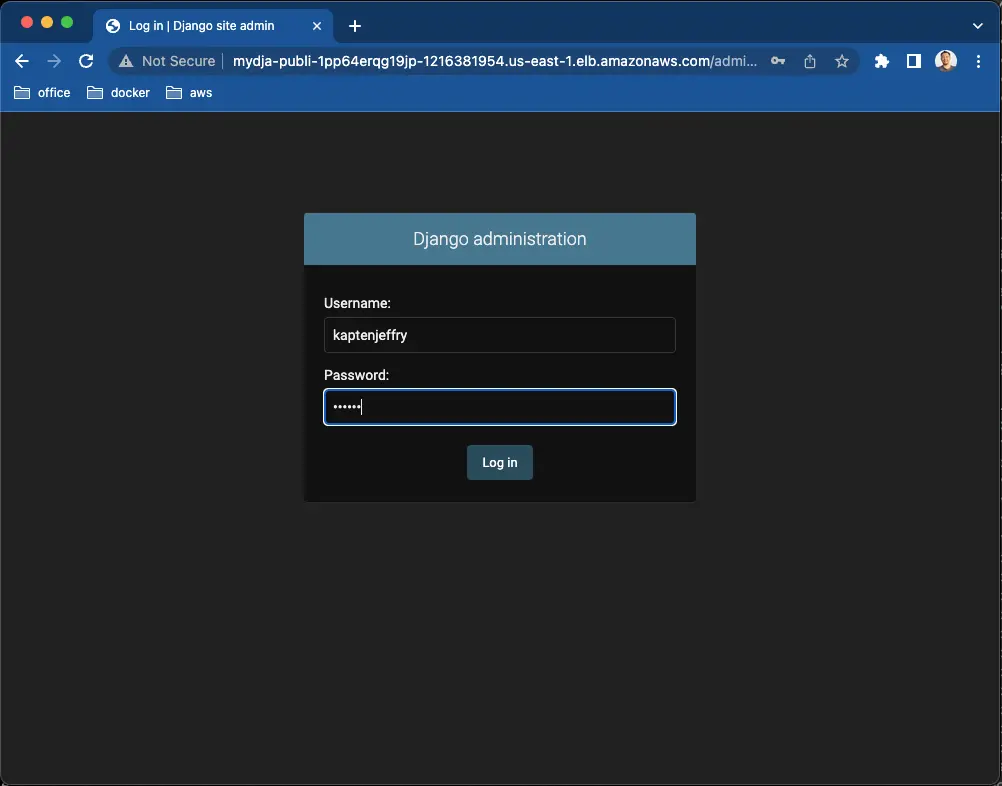
You should see the Django admin:
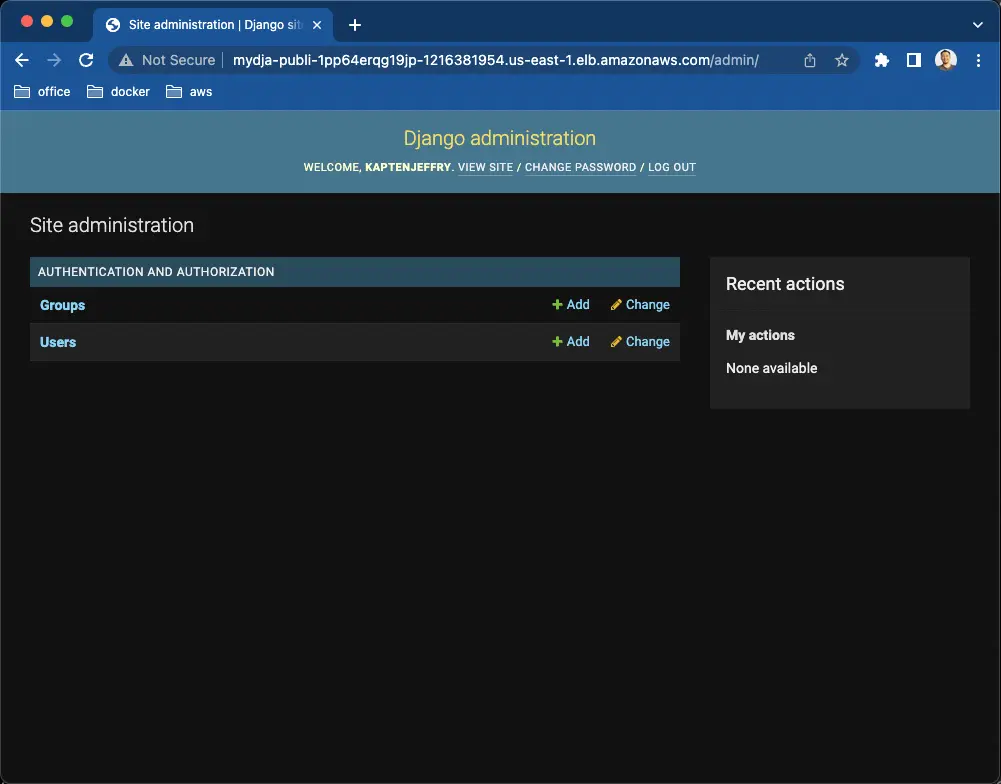
A mini cheat sheet
| AWS Copilot commands | Remarks |
|---|---|
copilot app ls |
To list available Applications |
copilot app show -n appname |
To get the details of an Application |
copilot app delete -n appname |
To delete an Application |
copilot svc ls |
To list available Services |
copilot svc show -n svcname |
To get the details of a Service |
copilot svc delete -n svcname |
To delete a Service |
The End
That’s all, folks.
AWS Copilot is a tool to automate the deployment of AWS infrastructure for our containerized application needs. It takes away most of the worries about infrastructure and enables us to focus sooner on the application development.
For further info on AWS Copilot visit its website.
docker containers cloud aws python django

Comments